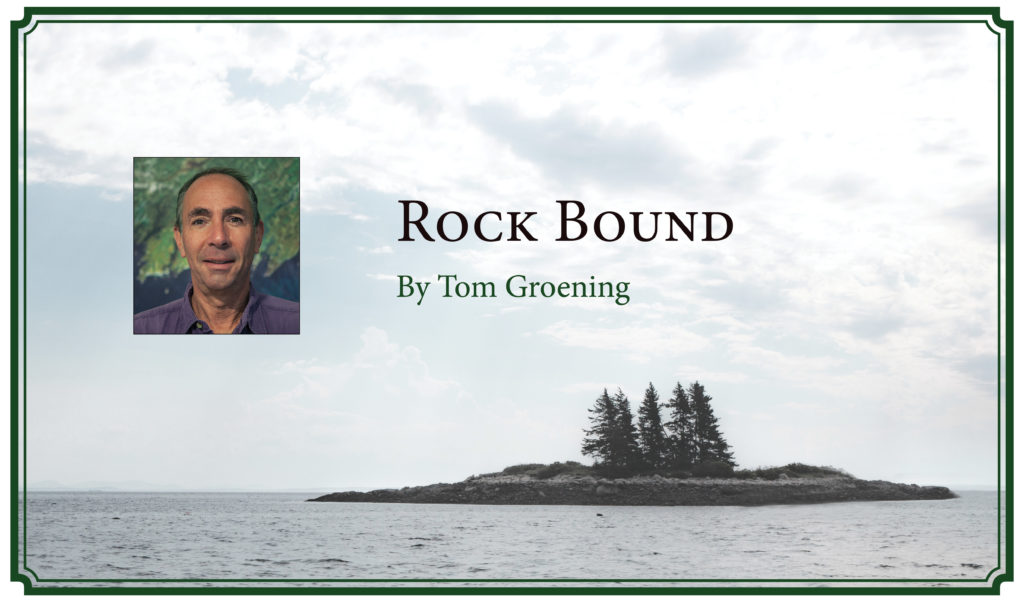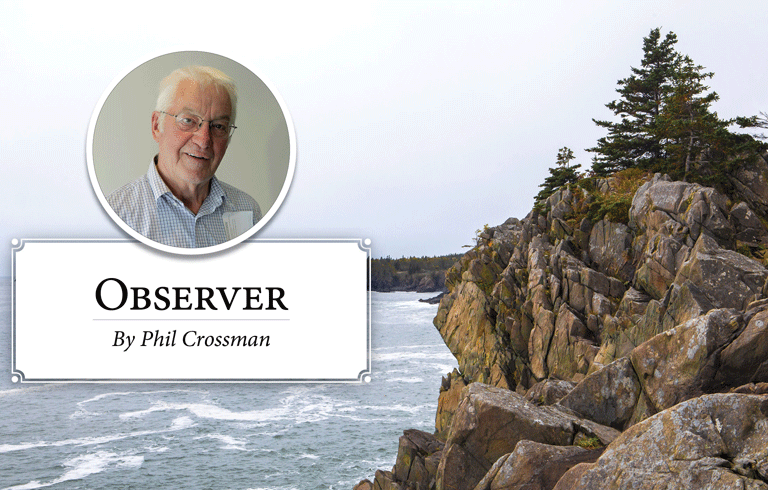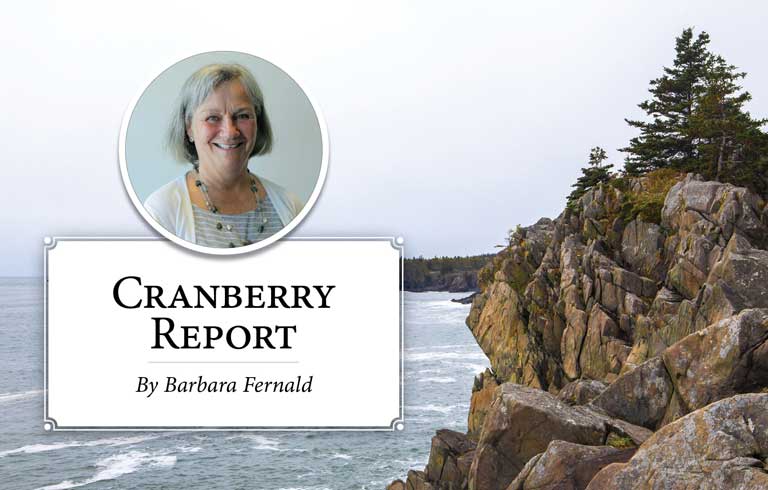By Tom Groening
Sitting in the sun on a brief foray out of the office the other day, I got to thinking about our relationship with the weather here in Maine. We’re not the only state whose identity is wrapped up in what climate conditions we face, but we’re one of a few of them.
We’ve all heard the questions: What’s it like here in winter? How much snow do you get? Does the water ever get warm enough to swim in? States with temperate climates don’t inspire such queries from visitors.
I’ve always thought that winter, and the often slow-to-come, cold and rainy springs we endure, are simply the price we pay to live here.
It’s a price I’m very willing to pay. Maine has so much to give—natural and built beauty; human-scaled community; low crime and high civic engagement; room to move and recreate; access to water and woods; lack of pretense.
In fact, I would argue the above qualities are related to how brief an affair we have with the sorts of days that an office worker like me can sit in the sun wearing a short-sleeve shirt. Economies to our south hum along year-round, and their demands tend to erode some of the above qualities.
I have a friend who grew up in the Caribbean who believes warm-weather climates—places where you wouldn’t die if you ran out of gas in the middle of the night in the middle of nowhere in February and had to sleep beside the road—tend to be friendlier to personal indolence and even decadence, particularly of the alcohol- and drug-fueled kind.
Maybe New England’s Puritan roots better account for whatever moral values we as a people can lay claim to. But it also could be true that having to get ready for that always-returning winter has carved a cautionary groove into our souls. If we didn’t cut firewood and grow gardens in summer, we’d freeze and starve in January.
When I see deer on a frigid mid-winter morning, gnawing at the cedar trees on our driveway, I’m reminded of the 2005 documentary March of the Penguins. We view the story through an anthropomorphic lens, but still, the narrative arc of the film seems so sad, as we watch the female and male Antarctic critters take turns standing guard over their young, freezing and starving through winter and barely surviving to begin fattening up in that still-cold summer. The same fatten-up-and-then-starve cycle plays out in Maine with deer and other animals.
Another film comes to mind as these thoughts slide across my mind as I sit in the sun—Groundhog Day, from 1993. When director and writer Harold Ramis died in 2014, a lot was written about that film, including disclosures about deleted scenes.
One of the lingering questions about the movie, in which the TV weatherman played by Bill Murray is doomed to live the same day over and over, is how long was the character stuck in Punxsutawney, Penn. One scene left on the cutting room floor showed Murray in the town library, reading the first book on the first shelf, and later, reading a book from deep into the stacks, implying that he’d been there for many years.
Like the mythical Sisyphus, the weatherman could be seen as living out a kind of punishment—or was it a chop wood, carry water ritual leading to some kind of enlightenment?
At any rate, as I now move through my 36th Maine summer, I’ve become more contemplative about such things. And I think it was no accident that the Groundhog Day character was a weatherman. There are subtle lessons implied in the writer’s choice, suggesting that we shouldn’t be so confident about predicting what lies ahead, and that the drudgery of those dark winter days is part of what make that sun on my face so welcome.
And the very idea of Groundhog Day as a tradition is laughable in Maine; when would we not face another six weeks of winter after Feb. 2?
When the Andie MacDowell character, playing Murray’s love interest in the movie, chides him for falling asleep as she visited him in his B&B room the night before, he replies: “It was the end of a very long day.”
I am trying to embrace the long day that is our year. Maybe I will learn to serenely accept the sky darkening at 3:45 p.m. in early December, and the way an April day can begin with sun and end with spitting snow. Or maybe those parts of our year are like Sisyphus pushing the stone up the hill, and the July noon is letting it roll down the hill again.
Tom Groening is editor of The Working Waterfront.





